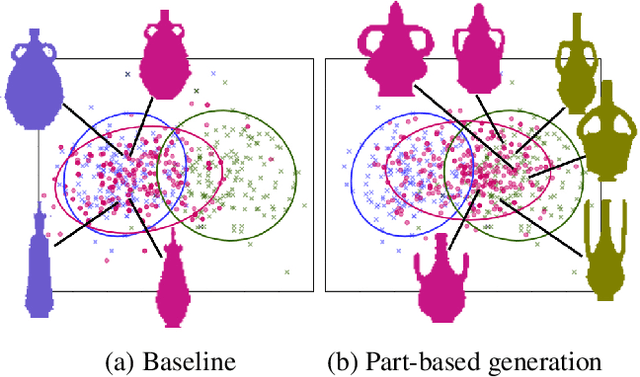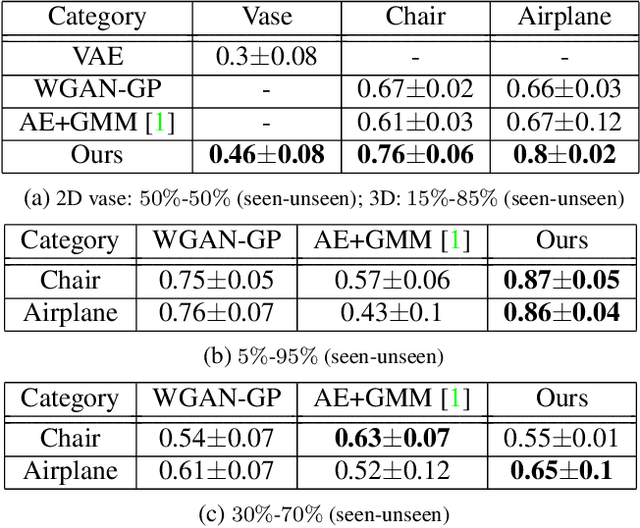Learning to Generate the "Unseen" via Part Synthesis and Composition
Paper and Code
Nov 19, 2018



Data-driven generative modeling has made remarkable progress by leveraging the power of deep neural networks. A reoccurring challenge is how to sample a rich variety of data from the entire target distribution, rather than only from the distribution of the training data. In other words, we would like the generative model to go beyond the observed training samples and learn to also generate "unseen" data. In our work, we present a generative neural network for shapes that is based on a part-based prior, where the key idea is for the network to synthesize shapes by varying both the shape parts and their compositions. Treating a shape not as an unstructured whole, but as a (re-)composable set of deformable parts, adds a combinatorial dimension to the generative process to enrich the diversity of the output, encouraging the generator to venture more into the "unseen". We show that our part-based model generates richer variety of feasible shapes compared with a baseline generative model. To this end, we introduce two quantitative metrics to evaluate the ingenuity of the generative model and assess how well generated data covers both the training data and unseen data from the same target distribution.
 Add to Chrome
Add to Chrome Add to Firefox
Add to Firefox Add to Edge
Add to Edge